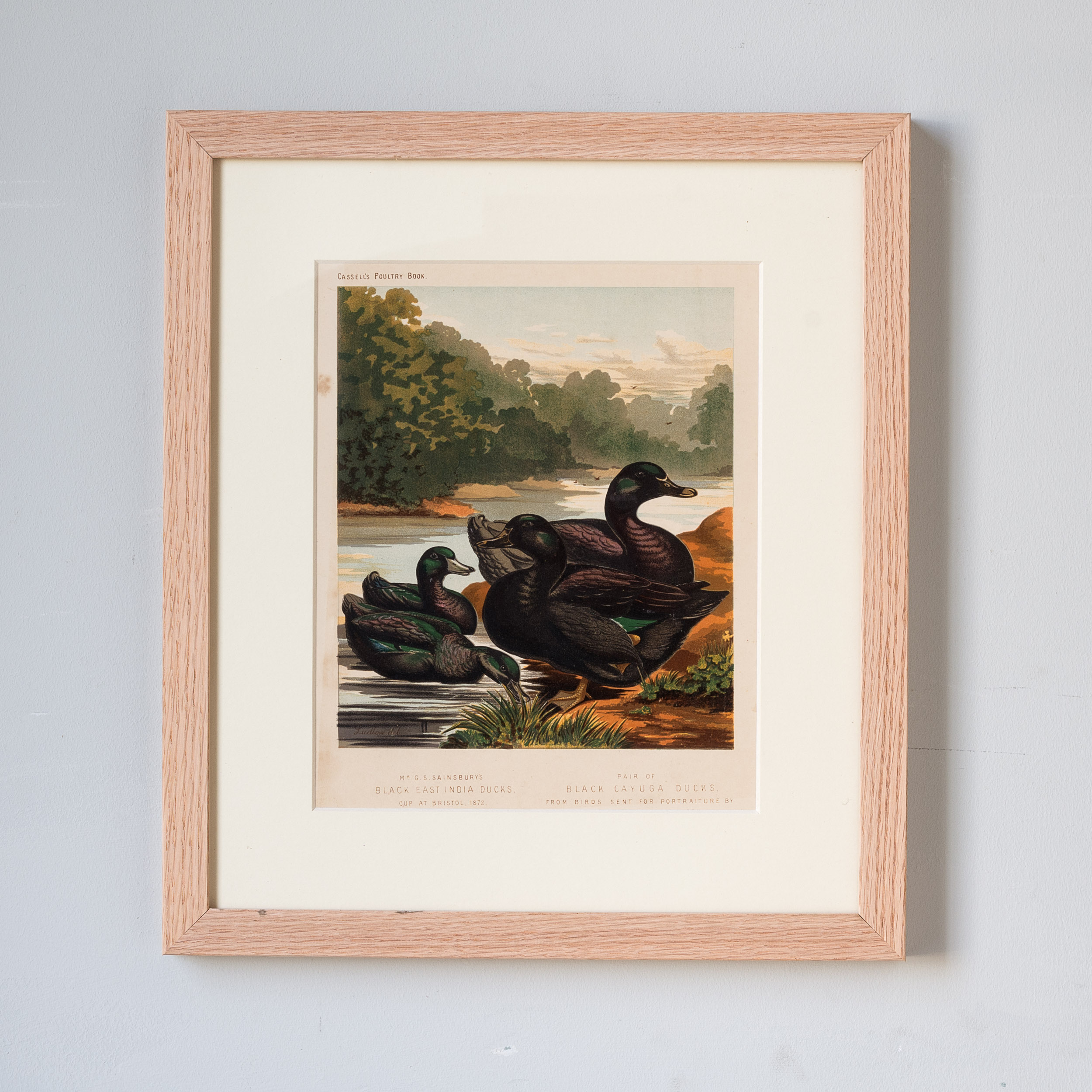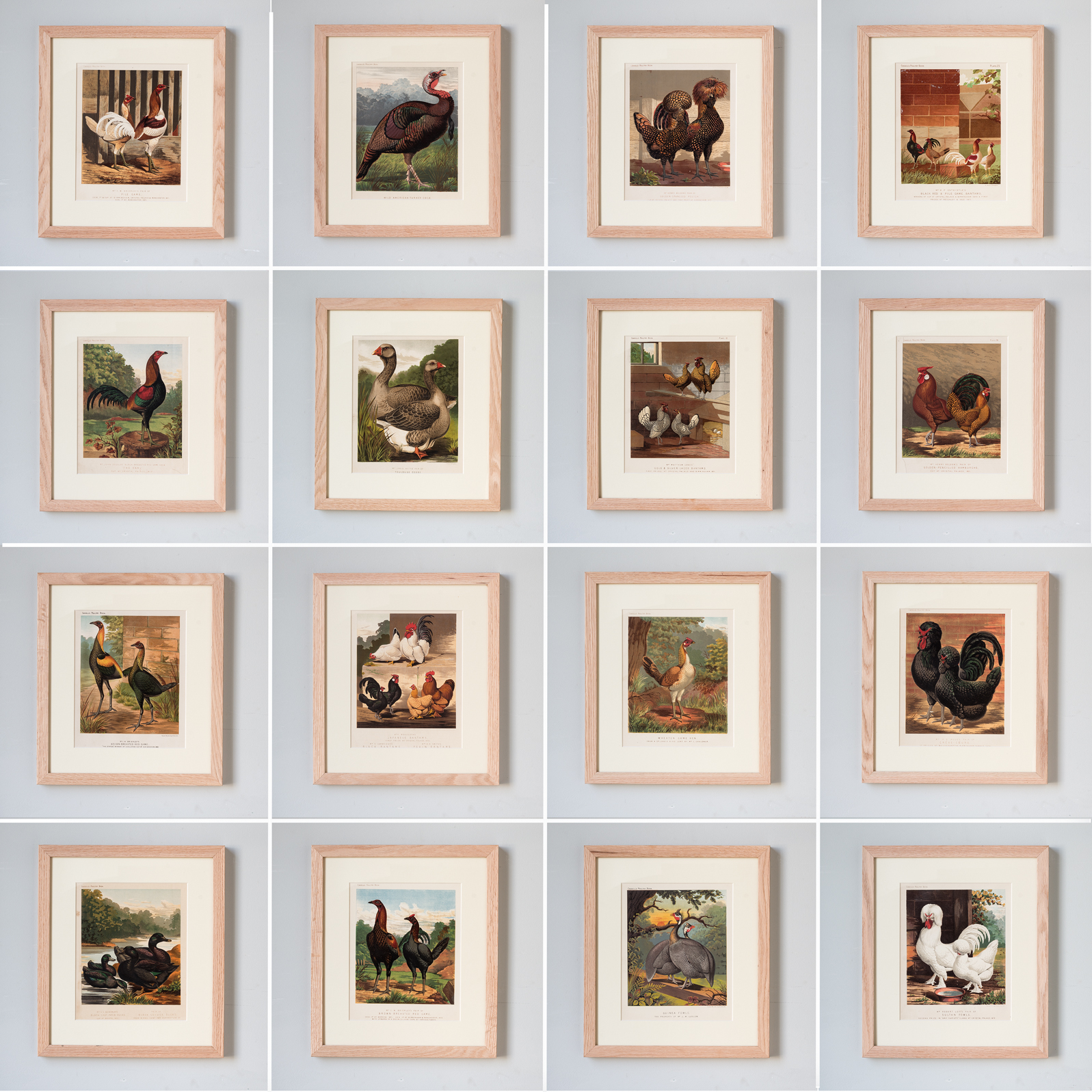Wright’s Poultry, original chromolithograph from 1873
Based on the illustrations of famed ornithological artist, J.W. Ludlow.
Published by Cassells c1873. Framed in natural ash.
'Black East India Ducks, Black Cayuga Ducks'
£130 each
In stock
Lewis Wright was a poultry, pigeon and animal expert during the 19th century who played a major part in documenting old and rare breeds.


